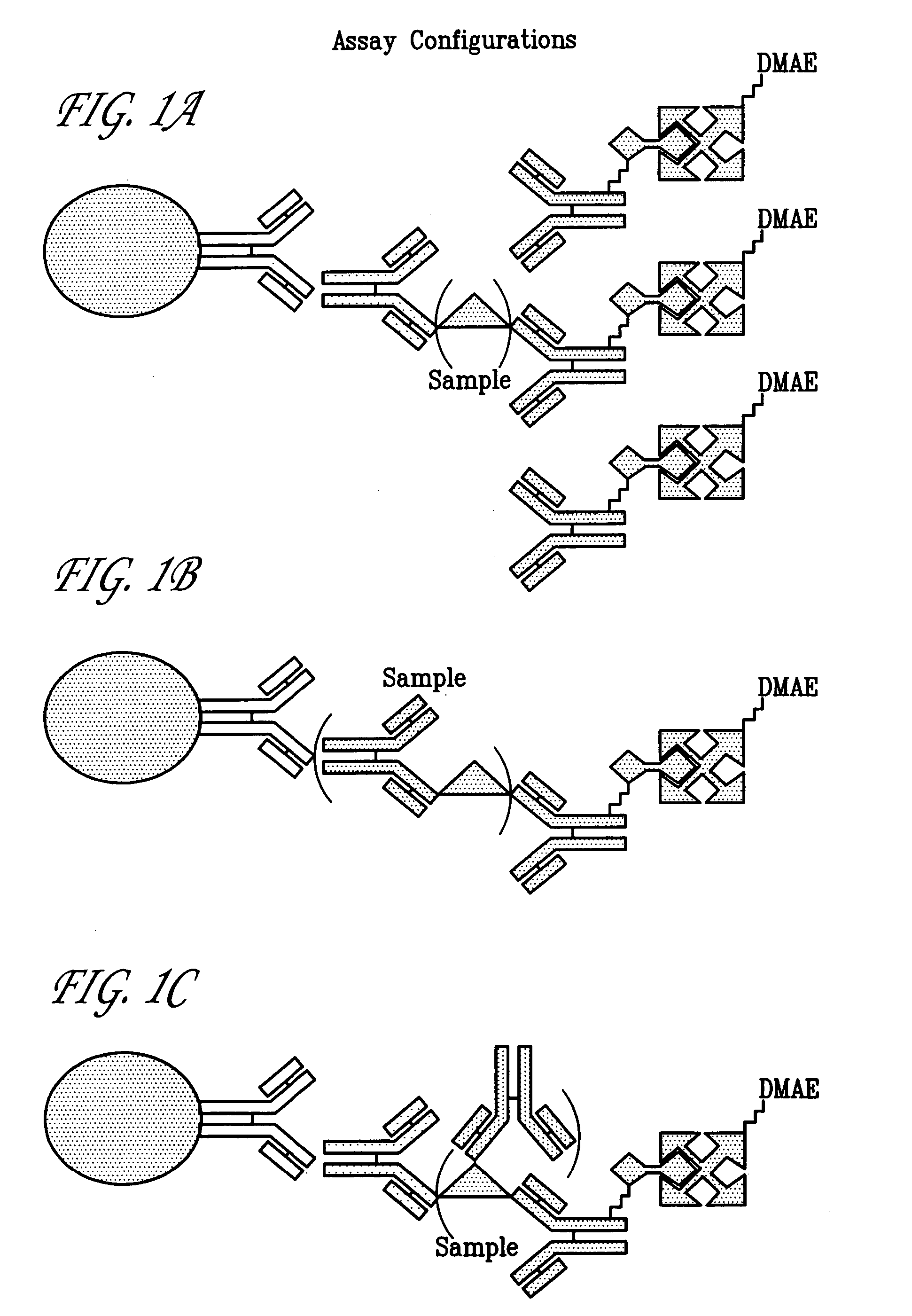Hepatitis C viral antigen immunoassay detection systems
a technology of immunoassay and hepatitis c virus, which is applied in the field of immunoassays for detecting hepatitis c virus, can solve the problems of difficult clinical application, inability to detect assays easily, and frequent progression to chronic liver damag
- Summary
- Abstract
- Description
- Claims
- Application Information
AI Technical Summary
Benefits of technology
Problems solved by technology
Method used
Image
Examples
example 1
Construction of PSC59 Poly
[0056]The HCV sequence used for the production of E1 and E2 was isolated from plasmid pC5P-1 as a StuI partial / BglII fragment. This fragment extends from the first methionine of HCV-1 polyprotein to aspartic acid at position 966. The domains included are the nucleocapsid, C, both putative envelope glycoproteins, E1 and E2, and a truncated form of NS2, respectively. In addition, the fragment also contains about 60 bp corresponding to that portion of the 5′-untranslated region of the HCV genome. One skilled in the art can also prepare other fragments containing portions of E1 and E2 as desired.
[0057]The fragment was treated with Klenow polymerase to create blunt ends, and then cloned into the StuI site of a vaccinia vector, PSC59 (obtained from Dr. B. Moss at the National Institutes of Health, Bethesda, Md.); other vectors can be used, however. As a result of the ligation into the polylinker sequence of the vector, the C′-terminus of the NS2 region contains a...
example 2
Preparation of Stocks of Vaccinia Virus Encoding the HCV Polyprotein Fragment Including E1 and E2
[0058]The screening for recombinant Vaccinia virus was carried out essentially as described by Mackett et al. in DNA Cloning, Vol. II (Ed. D. M. Glover, IRL Press, Oxford, England, 1985, pp. 191–211). More specifically, a confluent monolayer (6 cm dish) of African green monkey kidney cells, BSC40, was infected with wild type Vaccinia virus (WR strain) at a multiplicity of infection (MOI) of 0.05. After a 2 hour incubation at 37° C., the cells were transfected with 25 μg of PSC59 poly DNA using the calcium phosphate method. After 4 hours of incubation, the medium was changed to normal medium, and the cells were incubated for an additional 48 hours at 37° C. The cells were recovered by scraping them from the dish, and the virus was released by 3 cycles of freezing-thawing, and the released virus in the cell lysate were stored at −80° C.
[0059]In order to screen for recombinant virus, a conf...
example 3
Production of E1 / E2 Antigens
[0061]One liter of Hela S3 spinner cells were brown in a spinner flask to a density of 106 cells per ml. The cells were infected with the recombinant Vaccinia virus encoding the HCV polyprotein fragment using a MOI of 1.0, incubated overnight, harvested, and stored as a cell pellet at −80° C.
[0062]The E1 / E2 expression product was purified by lysing the cells in hypotonic buffer, followed by extraction in a buffer containing nonionic detergent. The cellular extract was chromatographed through a lectin (GNA) agarose column. The desired proteins were eluted from the column with methyl-α-D-mannopyranoside (Sigma Corp.). The eluted fractions were monitored for E1 and E2 by Western blots using a specific antiserum raised against E1 or E2. The fractions containing the antigens were pooled and concentrated on a S-Sepharose column (Pharmacia). The purity of the final product was about 70%.
[0063]The E1 (130aa) and E2 (251aa) proteins can also be expressed as intern...
PUM
| Property | Measurement | Unit |
|---|---|---|
| Paramagnetism | aaaaa | aaaaa |
Abstract
Description
Claims
Application Information
 Login to View More
Login to View More - R&D
- Intellectual Property
- Life Sciences
- Materials
- Tech Scout
- Unparalleled Data Quality
- Higher Quality Content
- 60% Fewer Hallucinations
Browse by: Latest US Patents, China's latest patents, Technical Efficacy Thesaurus, Application Domain, Technology Topic, Popular Technical Reports.
© 2025 PatSnap. All rights reserved.Legal|Privacy policy|Modern Slavery Act Transparency Statement|Sitemap|About US| Contact US: help@patsnap.com



